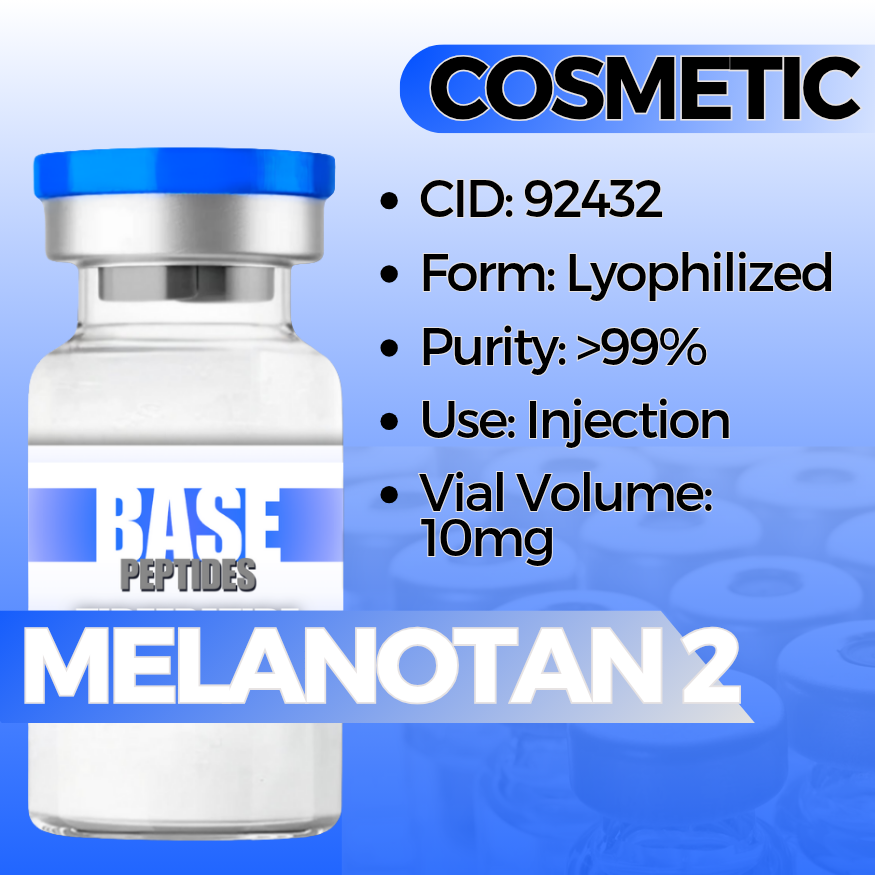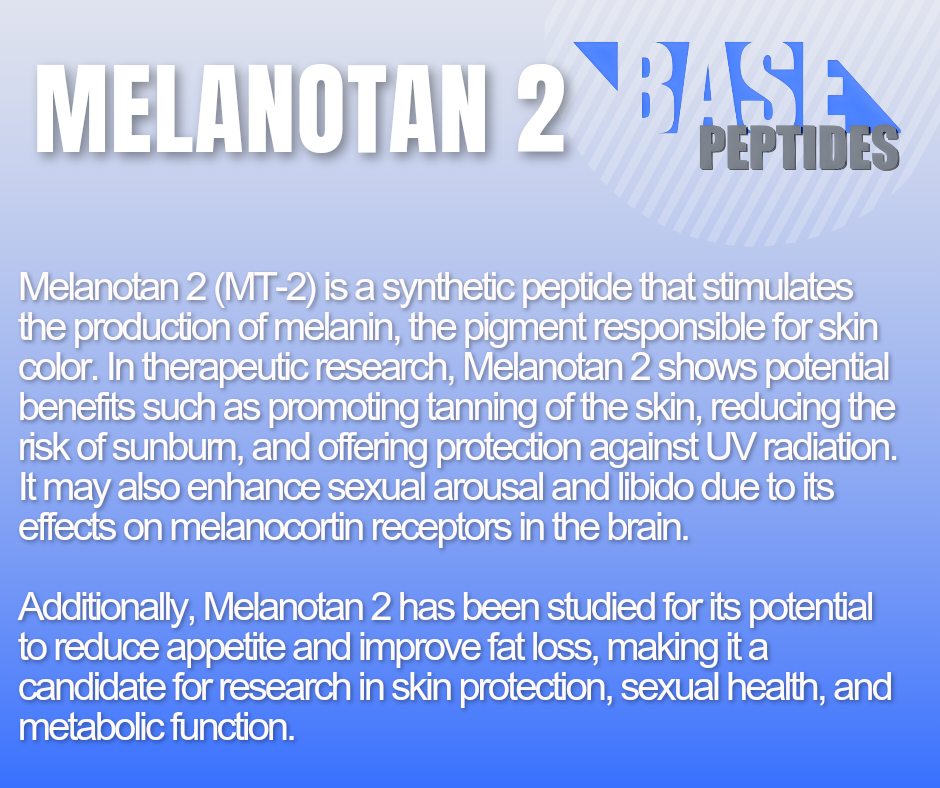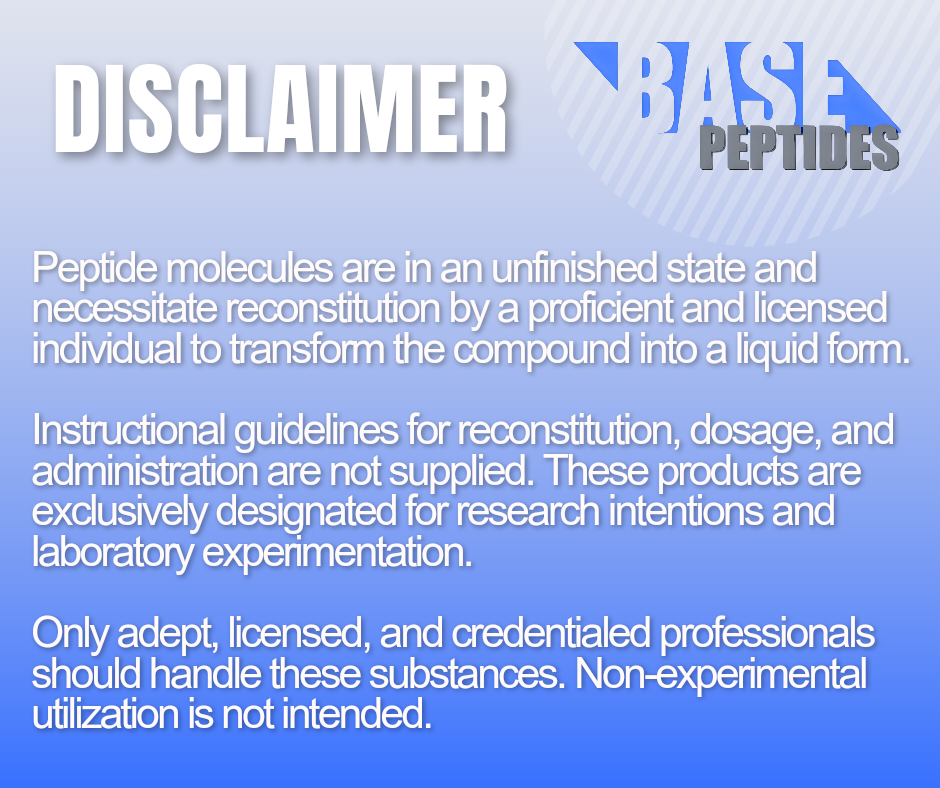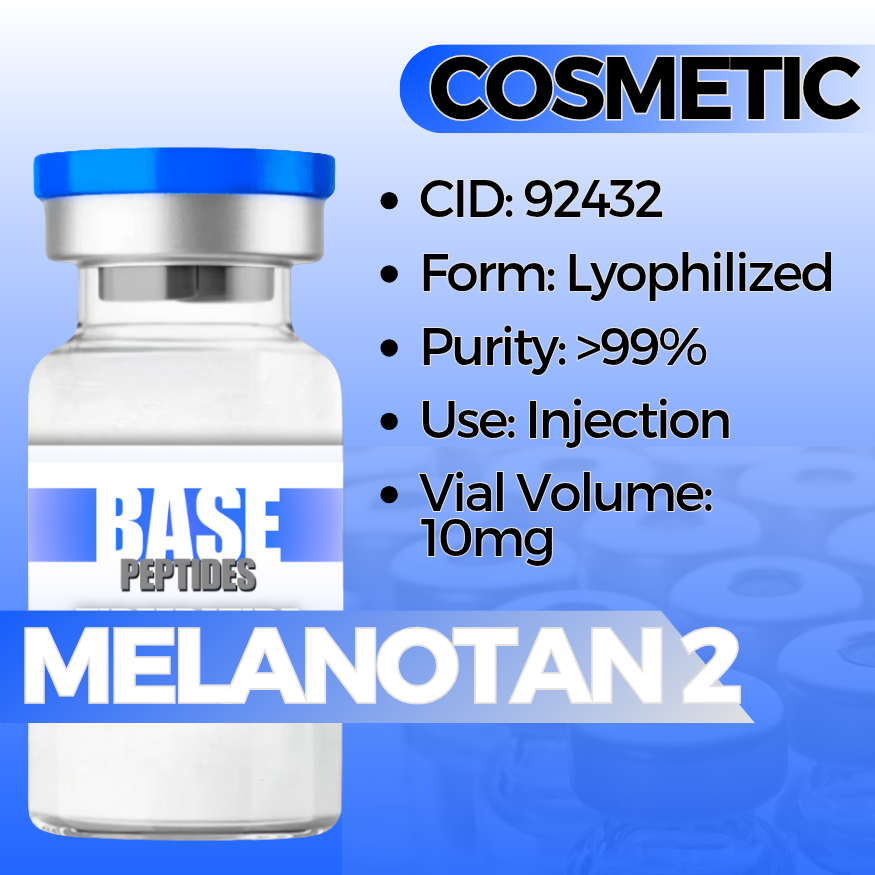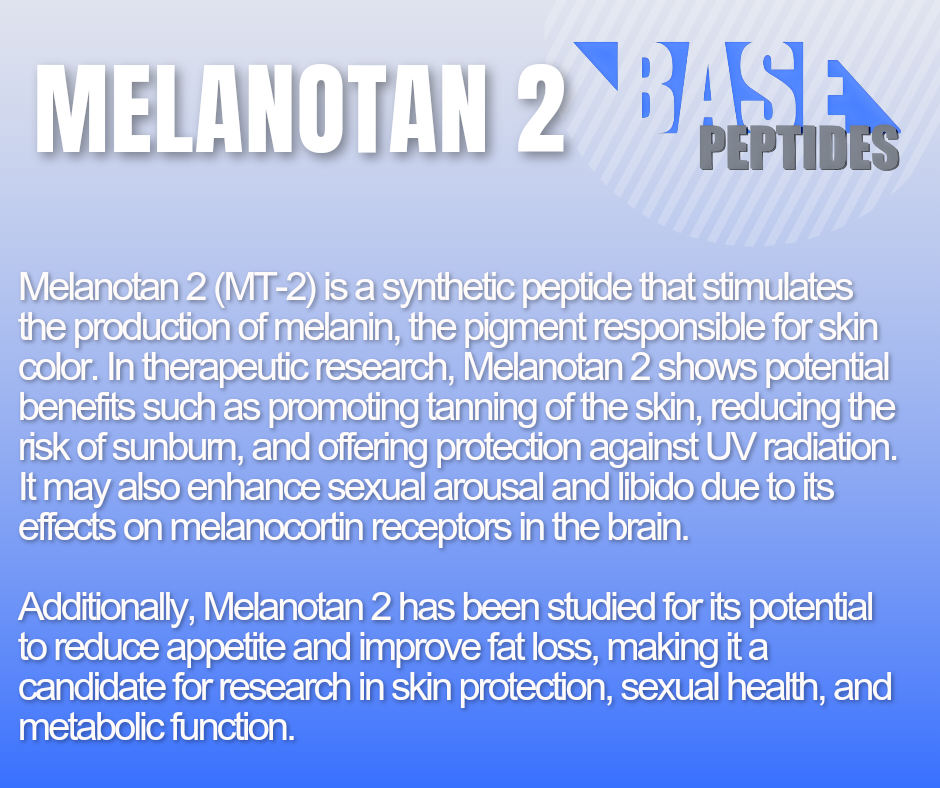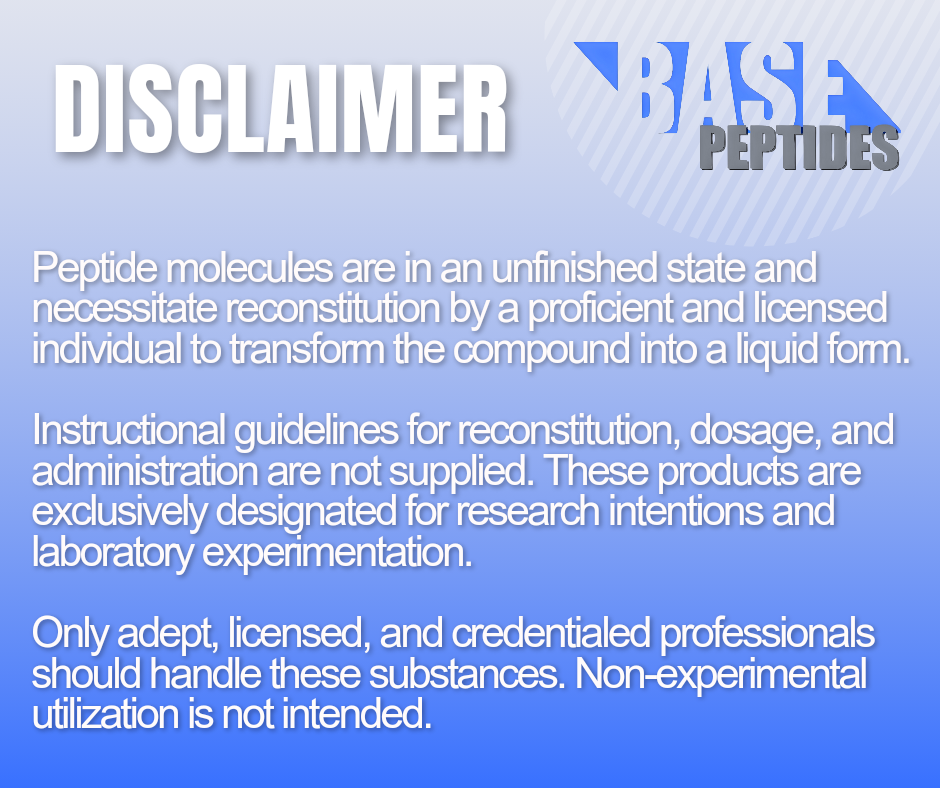Melanotan 2
Melanotan 2
Base Peptides are intended for licensed medical professionals and experienced researchers. Reconstitution required. Dosing and use instructions are not provided.
Regular price
$45.00
Regular price
Sale price
$45.00
Unit price
per
Shipping calculated at checkout.
Couldn't load pickup availability
Melanotan II (MT-II) — Melanocortin Receptor Agonist
Melanotan II is a synthetic cyclic heptapeptide that activates melanocortin receptors (primarily MC1R, MC3R, MC4R). It’s used in research to probe pigmentation pathways, photobiology, and neuroendocrine signaling linked to energy balance and sexual behavior models.
Identifiers
- Synonyms: MT-II; Melanotan-2
- Sequence (cyclized): Ac-Nle-cyclo(Asp-His-D-Phe-Arg-Trp-Lys)-NH2
- Receptor class: Melanocortin (MC1R/MC3R/MC4R agonist)
- CAS No.: 121062-08-6
How It Works (Plain English)
- MC1R (skin & hair follicles): Signals melanocytes to boost eumelanin synthesis → darker pigmentation in pigment-capable models.
- MC3R/MC4R (CNS): Part of hypothalamic networks involved in energy balance, appetite, and sexual behavior in preclinical paradigms.
- Cyclic design: The lactam ring (Asp↔Lys) improves stability and receptor affinity vs linear α-MSH fragments.
Why Researchers Use It
- To study melanogenesis and melanosome biology, UV-response, and photoprotection pathways.
- To parse MC4R-linked neuroendocrine circuits affecting appetite, energy use, and sexual arousal behaviors (animal models).
- As a comparator scaffold for next-gen melanocortin analogs (e.g., bremelanotide/PT-141 derivation).
Key Study Themes — What’s Typically Observed
Pigmentation & Photobiology
- Endpoints: Melanin content, tyrosinase activity, melanosome transfer, UV-induced marker panels.
- Typical findings: ↑ eumelanin output and darker baseline pigmentation in responsive models.
- Design note: Control for baseline Fitzpatrick type in translational designs; use standardized light exposure where relevant.
Energy Balance & Sexual Behavior (MC3R/MC4R)
- Endpoints: Food intake, locomotion, hypothalamic markers; sexual behavior readouts in rodents.
- Typical findings: Context-dependent effects on appetite; sexual-behavior activation in select paradigms.
- Why it matters: Useful probe of melanocortin circuitry beyond pigmentation.
Potential Research Applications
Dermal Biology
- Melanocyte signaling, photodamage assays, UV-response studies.
Neuroendocrine
- MC4R-mediated appetite/sexual behavior circuits, CNS receptor mapping.
Medicinal Chemistry
- Structure–activity studies vs α-MSH analogs; stability and receptor-selectivity optimization.
Synergistic / Comparator Peptides
PT-141 (Bremelanotide)
- Why compare: A pharmacophore derived from MT-II with emphasis on MC3R/MC4R sexual-behavior pathways.
α-MSH / Afamelanotide (comparators)
- Why compare: Benchmark pigmentation potency/selectivity across melanocortin agonists.
GHK-Cu / BPC-157 (adjacent research)
- Why pair (design-dependent): Skin-focused models where pigmentation and dermal remodeling are both endpoints.
Known Concerns (Context)
- Acute reactions (preclinical reports): Nausea, flushing, facial warmth, transient appetite changes.
- Pigmented lesion monitoring: Pigmentation pathways are biologically active—track melanocytic markers in appropriate models.
- General: For laboratory research use only; not for human consumption or therapeutic/veterinary use.
Specifications & Handling
- Form: Lyophilized peptide powder (lot-coded)
- Purity: ≥ 98–99% (HPLC/MS)
- Storage: ≤ −20 °C long-term (dry, dark); refrigerate after reconstitution as protocol dictates
- Reconstitution: Prepare fresh; record solvent/vehicle, concentration, and time-to-assay; avoid repeated freeze–thaw.
- Labeling: Tamper-evident; “Research Use Only”; CAS/lot/SKU and expiration clearly displayed.
Regulatory & Use Notice
Sold for laboratory research use only. Not for human consumption, medical, or veterinary use. No human-use instructions are provided. Buyer is responsible for safe handling and regulatory compliance.
Melanotan II (MT-II) Research Peptide | Melanocortin Agonist | Pigmentation, Photobiology & Neuroendocrine Studies
